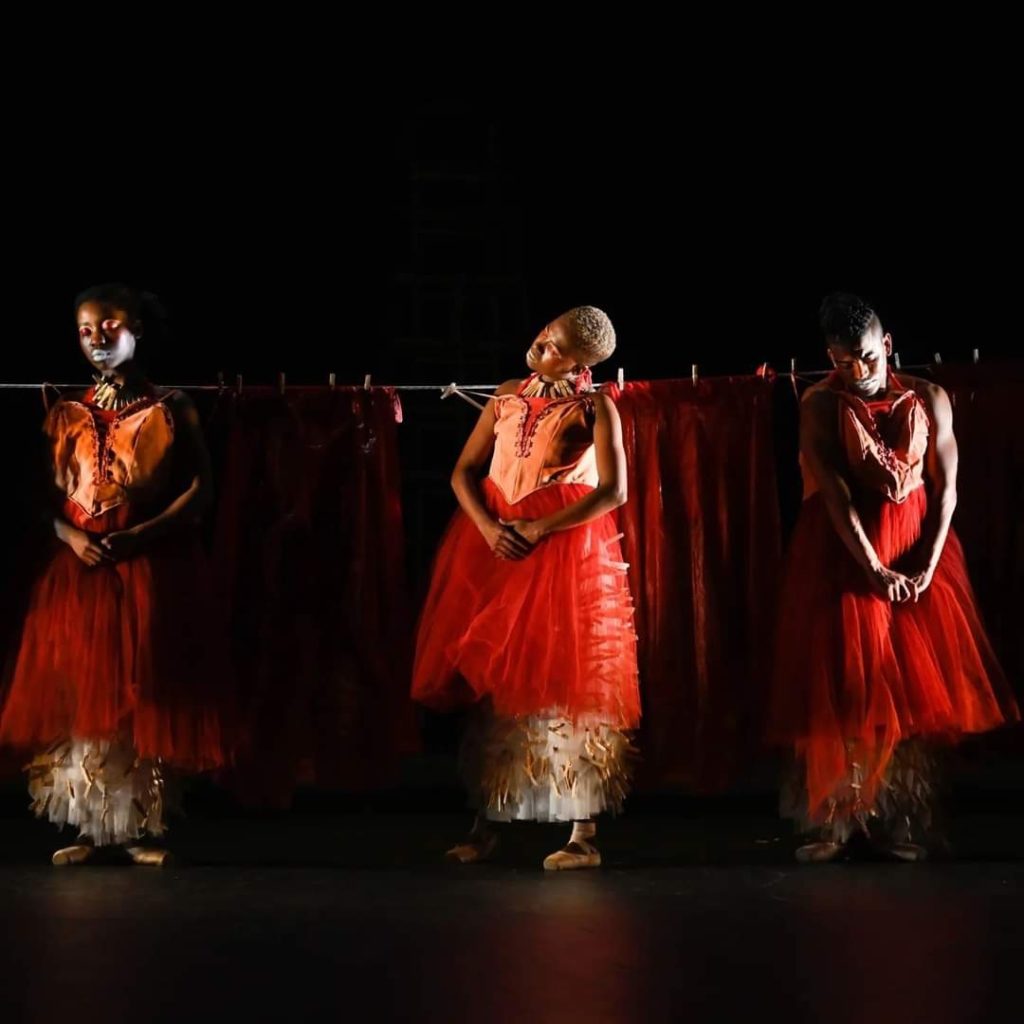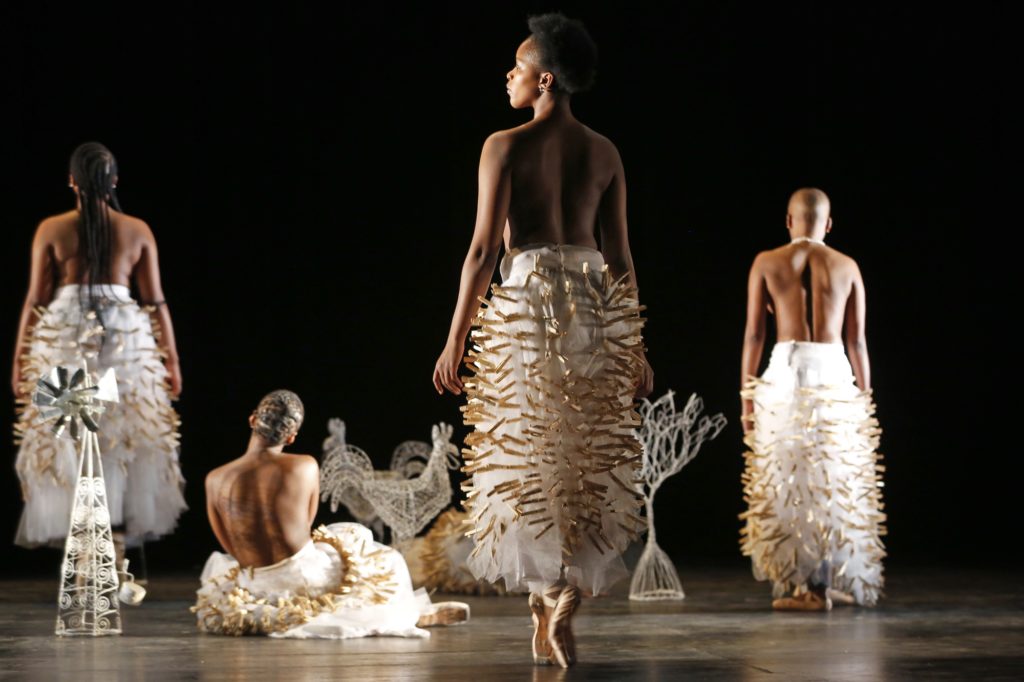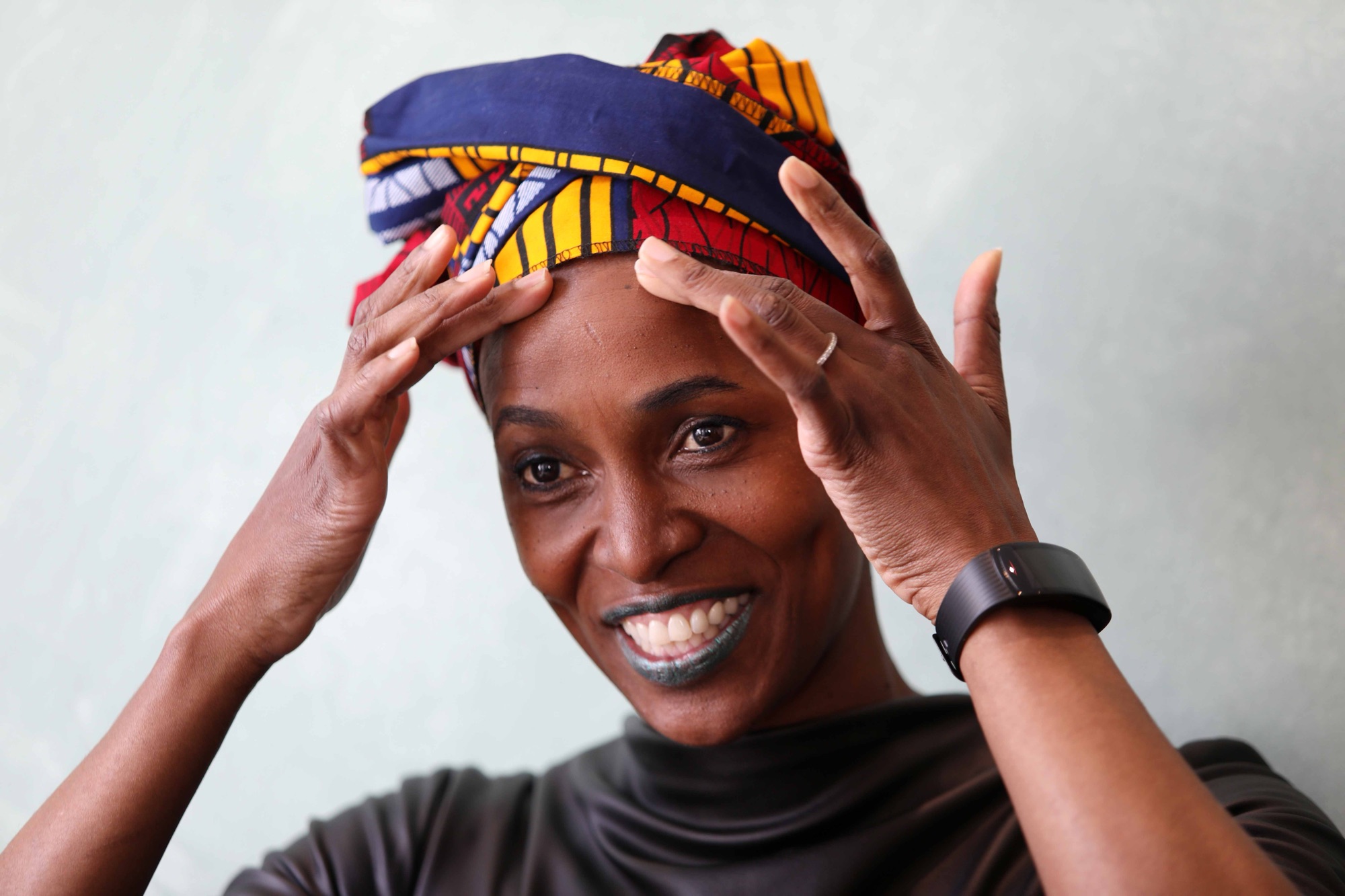Words by Francesca Matthys.
“I have been hatching all my life”, Mamela Nyamza opens our interview about her new work Hatched Ensemble. I have known this exuberant artist for a couple of years and having deeper insight into her mind through this interview and seeing her latest work is a gift and an honor.
Hatched Ensemble was born from the residue of one of Nymza’s earlier works Dying Swan that was created in 1999 in New York. The artist performed the work three months’ pregnant which coincided with the loss of her mother. Life and death are always in close proximity. In 2003, Dying Swan emerged to become Hatch, exploring the modern day Makoti (a term of Zulu origin to describe a newly married woman, bride or daughter in law) hatching out of a literal egg, as a mother, artist, grieving daughter and queer Black woman living in South Africa. This layered and significant time in Nyamza’s life laid the foundation for Hatched Ensemble that would allow the artist to metaphorically and very poetically give birth to the next generation of artists that she would collaborate with.
As an artist, Nyamza is known internationally and specifically in South Africa as disrupting the limitations of contemporary dance and ballet, exuding provocation and nuanced self reflection through her dynamic artistic voice.
This new ensemble work that has toured across South Africa and Europe continues this legacy through a celebration of belonging, hatching out and “claiming spaces as Black bodies.” The work celebrates the surroundings in which Nyamza and her collaborators come from, a reclamation of land and space in honor of this.

As the work began, this resonance of home through surroundings moved me as I began to recognise wire chickens, windmills, proteas (South Africa’s national flower), smaller birds, and plants. Artefacts of home that are often sold in this form at city traffic lights or robots as we call them, and inspired by village or farm life in parts of South Africa. This prologue that Nyamza curates is like an exquisite moving painting, as we are introduced to the colour of white as an aesthetic; white makeup accents on performer’s faces, white wire objects carried and adored gracefully and white tutus with cream wooden pegs that sound like rain when they are shook. White that later is juxtaposed by vibrant red. I wonder about the significance here of whiteness juxtaposed with these beautiful Black bodies. As much as we carry home with us as global majority artists and people traversing across these foreign lands, we also carry the white gaze that is continuously inscribed on us and our experiences.
I always remember Nyamza to be expansive in her creative processes. She echos this by saying: “We are not boxing it up as ballet, it is an artwork about many issues in one.” As she continues to share the history of the work she speaks about the use of props in ballet and how the work’s use of props and objects illustrates “lifting baggages as crowns. We carry ourselves.”
We see many illustrations of this in the work and one that remains with me particularly is a continuous action of picking up after oneself and one another, sharing the weight of what has been left behind.
I found this very moving in a sense that in many spaces, especially the arts, Black bodies are reliant on themselves and their inner strength to show up, to create and support themselves. Perhaps here in Nyamza’s work, are ways to share the load.
Nyamza also shares about the plight of the artist, reliant on funding to make work and how for her this work was a labour of love that alongside limited funding support, would not initially have been possible if it weren’t for her community of resources.
Community and the idea of procession is a strong motif of Hatched Ensemble. The ensemble is so connected in their performance, in their presence and in their beings, channeling past people’s and faraway lands. Towards the end of the work, clad in red coats that are reminiscent of so many things such as factory worker coats, the performers carry the memories of home as if they are sacred. Led by one performer who earnestly repeats a hand gestural sequence, this procession is like a prayer for the matriarchs of their lineages.
Hatched Ensemble is not only a prayer to the maternal lineage but also a dedication to the labour both in physical work and the emotional and spiritual work of maternal lineage. It holds highly the work done historically by our mothers, especially mothers of colour and dance as valid and artistic work.
When asked about the process of making the work, Nyamza expressed the work initially only had three weeks to be rehearsed but that a lot of the groundwork was laid before, through dialogue and sharing insight into what already existed. “I facilitated what I experienced in my body in Hatched, the solo, with them, with the dancers.” This translation of story, experience and ballet vocabulary has birthed a process and work that not only creates intergenerational exchange of knowledge but allows spaces for new generations to share their stories within established and supported structures. This intergenerational dialogue is continued through the movement language that is inspired by pedestrian actions and ancestral memories of mothers, grandmothers and great grandmothers carrying out daily chores such as hanging up washing. This nostalgic image is directly integrated into the work as dancers raise themselves up high enough to do the same, hips heavy from the weight of pegs.

“Making a point about being on pointe”
Alongside these visual connections to where we come from, Mamela shares the use of classical Western and traditional South Africa songs, such as the Maskandi genre amongst others, as a tool for decolonisation in the work. Decolonisation of Black bodies in performance as the dancers sing alongside the musicians and the musicians are integrated into the work with the dancers. This interdisciplinary nature is so innate to African and specifically South African work, reminding us that life is art and dance is life.
Nyamza also shares that this singing, especially of a Xhosa hymn, resonated with South African audiences as they broke into song alongside the performers. This relationship to audience is in contrast to what the work has received in Europe with more subdued audiences expressing that they were focusing intently on the work as a new offering they had never been exposed to. Perhaps hatching the audience into freedom and liberation?
On gaze, when the dancers look at us, the audience, directly, only towards the end of the work, they effortlessly watch us, as they fully integrate the immense journey of the work. Unapologetically existing in their bodies and selves, their red makeup accents glimmer in the light. A stunning and playful embodiment.
The word ‘hatched’ is more than just the title of the work but a container and metaphor for the process and content of the work. A new framework of rebirth, discovery and legacy.
Nyamza shares that for her, this work is a dream come true while sharing sentiments of constant metamorphosis as an artist: “I grow with this ensemble as it grows.”
Hatched is performed by Litho Nqai, Given “Azah” Mphago African, Kirsty Ndawo, Kearabetswe Mogotsi, Thamsanqa Tshabalala, Dineo Mapoma, Pavishen Paideya, Amohelang Rooiland, Noluyanda Mqulwana, Zandile Constable, Thimna Sitokisi, Itumeleng Chiloane. It closes tomorrow evening at Barbican, part of Dance Umbrella festival.
